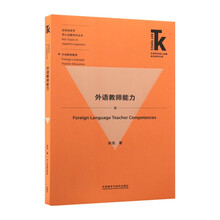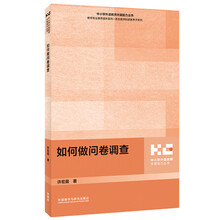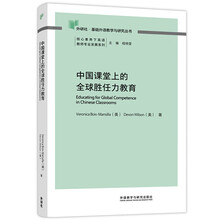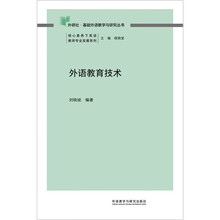伍铁平序
前言
Chapter Ⅰ Introduction
1.1 The research orientation
1.2 Significance of the study
1.3 Methodology and data
1.4 Organization of the book
Chapter Ⅱ Rhetorical Vagueness
2.1 Vagueness: a study object of rhetoric
2.2 A working definition of rhetorical vagueness
2.3 Types of rhetorical vagueness
2.3.1 Continuum vagueness
2.3.2 Categorical vagueness
2.3.3 Evaluational vagueness
2.3.4 Hedges
2.3.4.1 Brown and Levinson's taxonomy
of hedges
2.3.4.2 Shields and approximators
2.3.5 Figurative use of language
2.3.5.1 Metaphor
2.3.5.2 Euphemism
2.3.5.3 Irony
2.3.6 Implieature
2.3.6.1 Biased words
2.3.6.2 Biased sentences
2.4 Summary
Chapter Ⅲ Different Approaches to Vagueness: A Survey
3.1 The semantic approach
3.2 The cognitive approach
3.3 Vagueness in both rhetoric and pragmatics
3.3.1 Dynamic context in pragmatics
3.3.2 The recultivated ground of rhetoric :
the role of context
3.3.3 Leech's rhetorical approach to pragmatics
3.3.4 Grice's and Sperber and Wilson's pragmatic
approach to rhetorical vagueness
3.4 Chinese scholars' work on vagueness
3.5 Summary
Chapter Ⅳ A Pragmatic Framework for Rhetorical Vagueness
4.1 Rhetorical vagueness from a pragmatic perspective:
an integrated model
4.2 Context dependence and vagueness
4.2.1 Standard of precision
4.2.2 Comparison class
4.2.3 Expectations and purposes
4.2.4 Dynamics of context
4.3 CP and rhetorical vagueness
4.4 RP and rhetorical vagueness
g. 4.1 Loose talk, literal talk and vagueness
4.4.2 Relevance and metaphor
4.4.3 Relevance and irony
4.4.3.1 Irony as echoic interpretation
4.4.3.2 Criticism of the echoic theory and revision
suggestions
4.4.3.3 Pragmatic functions of irony
4.5 PP and rhetorics] vagueness
4.5.1 Vagueness as maxim-adherence strategy
4.5.2 Vagueness as management of face and
politeness strategies
4.5.3 Politeness as one competing goal
4.6 EP and rhetorical vagueness
4.6.1 Interestingness
4.6.2 Economy
4.6.3 Forcefulness
4.6.4 For competing goals
4.7 Summary
Chapter Ⅴ Vagueness in Political Rhetoric
5.1 Pragmatic account of vagueness in political rhetoric
5.1.1 Context and political vagueness
5.1.2 CP and political vagueness
5.1.3 RP and political vagueness
5.1.4 PP and political vagueness
5.1.5 EP and political Vagueness
5.2 Politician's speech
5.2.1 Vague words and expressions
5.2.1.1 Empty nouns in political rhetoric
5.2.1.2 Vague adjectives and adverbs
5.2.2 Political metaphor
5.2.2.1 The importance of political metaphor
5.2.2.2 Vagueness of political metaphor
5.2.2.3 Pragmatic functions of political metaphor
5.2.3 Political euphemism
5.2.3.1 The nature of political euphemism
5.2.3.2 The pragmatic functions of political
euphemism
5.3 Politician's acts
5.3.1 Vagueness in politician's speech acts
5.3.2 Evading answering questions
5.3.2.1 The definition of evasion
5.3.2.2 Overt and covert evasion
5.3.2.3 Evasion strategies
5.3.3 Manipulating political pronouns
5.3.3.1 Pronominal pragmatics
5.3.3.2 Inclusive/Exclusive "we"
5.3.3.3 Pronominal scaling and we-versus-they
dichotomy
5.3.4 Hedging a political opinion
5.3.4.1 Modal auxiliary verbs
5.3.4.2 Words suggesting likelihood
5.3.4.3 Approximators
5.3.4.4 Introductory phrases
5.3.4.5 If-clauses
5.4 Pragmatic functions of vagueness in political rhetoric
5.4.1 Textual functions of political vagueness
5.4.1.1 Economy and terseness
5.4.1.2 Expressivity
5.4.2 Interpersonal functions of political vagueness
5.4.2.1 Deliberately withholding information
5.4.2.2 Self-protecting
5.4.2.3 Avoiding or shifting responsibility
5.4.2.4 Threatening
5.4.2.5 Showing power and politeness
5.4.2.6 Creating a desired image
5.5 Summary
Chapter Ⅵ Conclusions
6.1 Main points and implications of the study
6.2 Major contributions of the research
6.3 Limitations and potential directions for further study
Bibliography
展开










